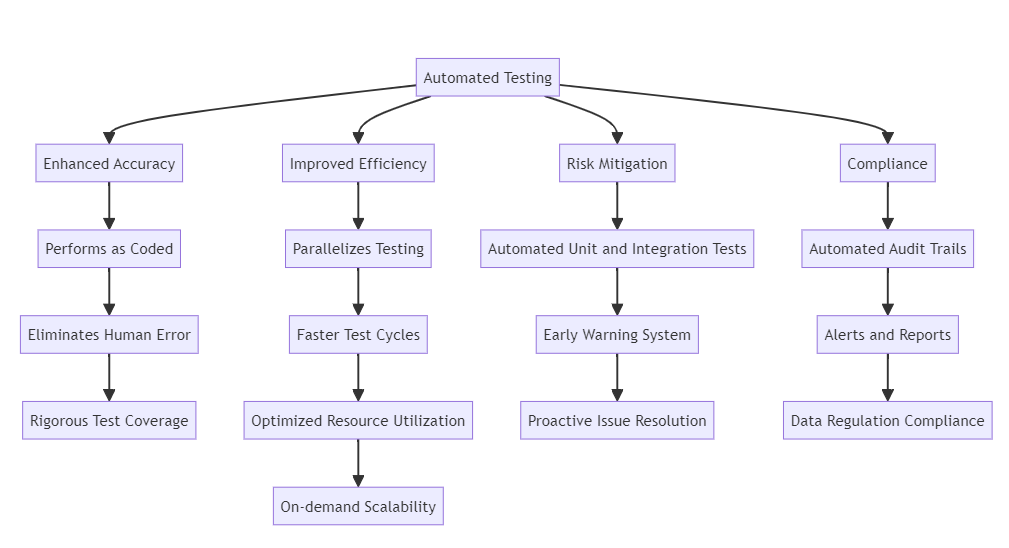Automated Testing in Data Engineering: An Imperative for Quality and Efficiency
This is a comprehensive guide to automated testing in data engineering. It covers components, tools, benefits, real-world applications, and best practices.
Join the DZone community and get the full member experience.
Join For FreeIn the data-driven landscape of today, automation has become indispensable across industries, not just to maximize efficiency but, more importantly, to ensure quality. This holds true for the critical field of data engineering as well. As organizations gather and process astronomical volumes of data, manual testing is no longer feasible or reliable. Automated testing methodologies are now imperative to deliver speed, accuracy, and integrity.
This comprehensive guide takes an in-depth look at automated testing in the data engineering domain. It covers the vital components of test automation, the diverse tools available, quantifiable benefits, real-world applications, and best practices to integrate automation seamlessly.
The Pillars of Automated Testing
Any holistic, automated testing framework rests on these key pillars:

Structured Test Automation Environment
This involves predefined guidelines, coding standards, best practices, and tools to enable automation. A robust framework optimizes maintainability and reuse while minimizing redundancy. Popular examples include Selenium, Robot Framework, and TestComplete.
Data Validation Techniques
These include methods to validate the correctness, accuracy, consistency, and completeness of data. These techniques are the crux of quality checks, from basic assertions to complex validation rule engines.
Performance Testing
This testing determines system behavior under real-world load conditions, identifying bottlenecks. Load testing, stress testing, endurance testing, and scalability testing are common performance tests.
Integration With CI/CD Pipelines
Incorporating automation into Continuous Integration and Continuous Delivery pipelines helps achieve accelerated release cycles without compromising quality.
Automated Testing Tools Stack

The test automation ecosystem offers open-source and licensed tools to cater to diverse needs:
- Load Testing
- Apache JMeter is an open-source tool for load and performance testing. Simulates heavy user loads to gauge system stability.
- API Testing
- Postman is a feature-rich tool for API testing with test automation capabilities.
- Web Application Testing
- Selenium is the leading open-source test automation tool specifically for web apps.
- Data Quality Testing
- Talend provides complete data health testing with profiling, validation, and quality checks.
- Data Pipeline Testing
- Great Expectations is specialized for testing data pipelines, data integrity, and transformations.
- dbt (Data Built Tool) enables data transformation testing in warehouses through analytics code.
Why Is Automated Testing Indispensable?

The overarching goal of automated testing is to deliver quality at speed. It empowers data teams with tangible benefits:
Enhanced Accuracy
Automated tests perform precisely as coded every single time, eliminating human error-prone manual testing. Rigorous test coverage leaves no scope for defects.
Improved Efficiency
Automated testing parallelizes testing to deliver exponentially faster test cycles, optimized resource utilization, and on-demand scalability.
Risk Mitigation
Automated unit tests, integration tests, and monitoring provide an early warning system for potential issues. This allows proactive resolution.
Compliance
Automated audit trails, alerts, and reports provide tangible visibility to demonstrate compliance with data regulations.
Accelerated Release Cycles
Integration with CI/CD pipelines enables reliable continuous delivery with automated quality gates, facilitating rapid iterations.
As key representatives from leading data analytics firm Fivetran stated to Harvard Business Review, "Automated testing is crucial to enabling continuous delivery and ensuring velocity."
Real-World Implementation Landscape
Leading organizations across domains demonstrate the real-world impact of test automation:
- Fortune 500 retail giant Walmart automated over 100,000 test cases across its e-commerce platforms to bolster quality.
- Prominent healthcare provider Anthem decreased release cycles from six months to six days through test automation.
- Digital payments firm Stripe executes over 150,000 automated tests daily across its global data infrastructure to prevent defects.
- Ride sharing platform Uber credits its automated testing strategy for facilitating rapid geographic expansion while maintaining stability.
Best Practices for Automation Success
- Gradual Adoption: Start small with critical areas before enterprise-wide automation to master efficiencies.
- Analytics-driven: Leverage intelligent analytics of test results for optimization opportunities.
- Integrated Process: Incorporate automation into product life cycles through DevOps collaboration.
- Continuous Updates: Actively maintain test ware as requirements evolve to prevent technical debt.
- Specialized Training: Invest in upskilling resources on tools and best practices for maximum ROI.
- Compliance Focus: Prioritize automated compliance reporting to satisfy data regulations like GDPR.
As leading analysts highlight, test automation is now optional but fundamental to staying competitive. The State of Testing Report, 2021 finds that leading teams spend over 50% of testing cycles on automation. The data engineering sphere is no exception to this.
The Road Ahead
Automated testing unlocks unparalleled quality, speed, and risk reduction. While adoption has steadily increased, challenges remain in aspects like capabilities mapping, maintenance overhead, and integration complexities, especially with legacy systems.
As forward-looking data engineering leaders double down on automation equipped with the right strategies and expertise, they are gearing up to dominate as champions of quality engineering.
Opinions expressed by DZone contributors are their own.

Comments